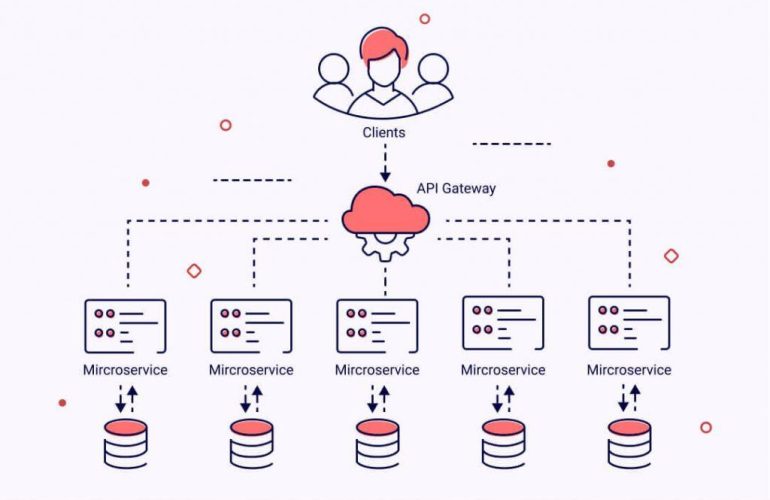In the rapidly evolving landscape of software development, the importance of efficiently managing and utilizing databases cannot be overstated. As applications become increasingly data-driven, developers must adopt robust methodologies to interact with databases effectively. This article aims to explore a variety of techniques that enhance the utilization of databases in programming. From optimizing queries to implementing effective indexing strategies, we will delve into best practices that not only improve performance but also ensure data integrity and security. By understanding and applying these techniques, developers can harness the full potential of databases, leading to more responsive applications and improved user experiences. Through a detailed examination of these strategies, this article seeks to equip programmers with the knowledge necessary to navigate the complexities of database management in their projects.
Table of Contents
- Understanding Database Design Principles for Optimal Performance
- Implementing Efficient Query Strategies to Enhance Data Retrieval
- Leveraging Indexing Techniques for Improved Database Access
- Best Practices for Database Security and Integrity in Programming
- Closing Remarks
Understanding Database Design Principles for Optimal Performance
To achieve optimal performance in database design, it is essential to focus on various principles that guide the effective structuring of data. One of the fundamental aspects is normalization, which involves organizing data to reduce redundancy and improve data integrity. By dividing large tables into smaller, manageable ones and establishing relationships through foreign keys, developers can ensure that data changes do not lead to inconsistencies. In parallel, denormalization can also be beneficial in read-heavy scenarios, where the emphasis is on reducing the number of joins to speed up query performance. Thus, understanding when to apply these contrasting techniques is crucial for maintaining performance while managing data complexity.
Another important principle is to implement indexing strategically. Indexes are essential for speeding up query execution, as they allow the database engine to quickly locate and access data without scanning every row in a table. However, excessive indexing can slow down data modification operations, so finding a balance is vital. Additionally, employing caching strategies can significantly enhance performance; frequently accessed data can be stored in memory to reduce the time spent querying the database. Furthermore, analyzing query performance using tools like query execution plans helps in identifying bottlenecks and optimizing database interactions effectively. Below is a simple comparison of these critical strategies:
| Technique | Benefits | Considerations |
|---|---|---|
| Normalization | Reduces redundancy, ensures data integrity | Can complicate queries |
| Denormalization | Improves read performance | Can lead to data anomalies |
| Indexing | Speeds up data retrieval | Can slow down data modification |
| Caching | Reduces query load on database | Cache invalidation can be complex |
Implementing Efficient Query Strategies to Enhance Data Retrieval
To enhance data retrieval in programming, developers must adopt efficient query strategies that improve performance and reduce latency. One effective approach is to utilize indexes, which can significantly accelerate data access. By creating indexes on frequently queried columns, developers can minimize the search space and speed up retrieval times. Additionally, leveraging composite indexes—indexes that cover multiple columns—can be particularly advantageous for queries that filter through multiple attributes. The use of query optimization techniques, such as avoiding SELECT *, can also help streamline data fetching by only retrieving the necessary fields.
Furthermore, employing parameterized queries not only enhances performance but also bolsters security against SQL injection attacks. This method allows for the reuse of execution plans, reducing parsing time for queries and maintaining server efficiency. Utilizing database features such as caching can lead to improved performance by storing the results of frequently executed queries in memory. Lastly, conducting regular query performance analysis can offer insights into slow-running queries, allowing developers to refine them for better results. By prioritizing these strategies, developers can create robust applications that efficiently manage large data sets.
Leveraging Indexing Techniques for Improved Database Access
In the realm of database management, indexing techniques stand out as critical methods for enhancing the speed and efficiency of data retrieval tasks. By creating indexes on frequently queried columns, programmers can significantly reduce the amount of data the system needs to process. This reduction leads to faster query response times and generally improves overall database performance. Key approaches to indexing include unique indexes, composite indexes, and full-text indexes, each designed to cater to specific types of data queries:
- Unique Indexes: Ensures that no duplicate values exist in the indexed column.
- Composite Indexes: Combines multiple columns into a single index, optimizing multi-column queries.
- Full-Text Indexes: Provides efficient search capabilities for text-heavy data.
Additionally, understanding the principles of index maintenance is crucial to leveraging these techniques effectively. Indexes require regular maintenance to ensure their effectiveness, as data changes can lead to fragmentation. This process involves monitoring index usage statistics and performing actions such as rebuilding or reorganizing indexes. By following a systematic approach, you can ensure that your database remains performant without unnecessary strain from fragmented indexes.
| Index Type | Use Case | Performance Impact |
|---|---|---|
| Unique Index | Enforcing uniqueness | Moderate |
| Composite Index | Multi-column queries | High |
| Full-Text Index | Text searches | Very High |
Best Practices for Database Security and Integrity in Programming
Ensuring database security and integrity is paramount in programming to protect sensitive information and maintain user trust. To achieve this, developers should implement a robust set of practices, including:
- Encryption: Always encrypt sensitive data both at rest and in transit to safeguard it from unauthorized access.
- Access Control: Utilize role-based access control (RBAC) to limit database permissions to only those who absolutely need it.
- Data Validation: Implement thorough data validation on both client and server sides to prevent injection attacks and ensure data integrity.
- Regular Audits: Conduct periodic security audits to identify and rectify vulnerabilities within the database.
Moreover, maintaining database integrity requires vigilant monitoring and proper coding practices. Developers should consider using:
- Transactions: Ensure that database transactions are atomic, consistent, isolated, and durable (ACID) to avoid data corruption.
- Backups: Regularly back up data and implement recovery strategies to minimize data loss incidents.
- Monitoring Tools: Deploy monitoring solutions to track database performance and security incidents in real time.
- Schema Design: Use normalization in database schema design to eliminate redundancy and enhance data integrity.
Closing Remarks
effectively utilizing databases in programming is crucial for developing robust and efficient applications. By implementing the techniques discussed in this article—such as optimizing queries, leveraging indexing strategies, utilizing ORM frameworks, and ensuring proper transaction management—developers can significantly enhance data retrieval speeds and maintain data integrity. Additionally, understanding the specific requirements of different database models, be it relational or NoSQL, allows for a more informed approach to database design and interaction.
As the landscape of programming continues to evolve, keeping abreast of emerging technologies and methodologies in database management will enable developers to adapt and innovate. By integrating these effective techniques into your workflow, you can not only streamline your programming efforts but also contribute to the overall performance and scalability of your applications. This ongoing commitment to mastering database utilization will prove invaluable in building solutions that meet the growing demands of modern software development.






